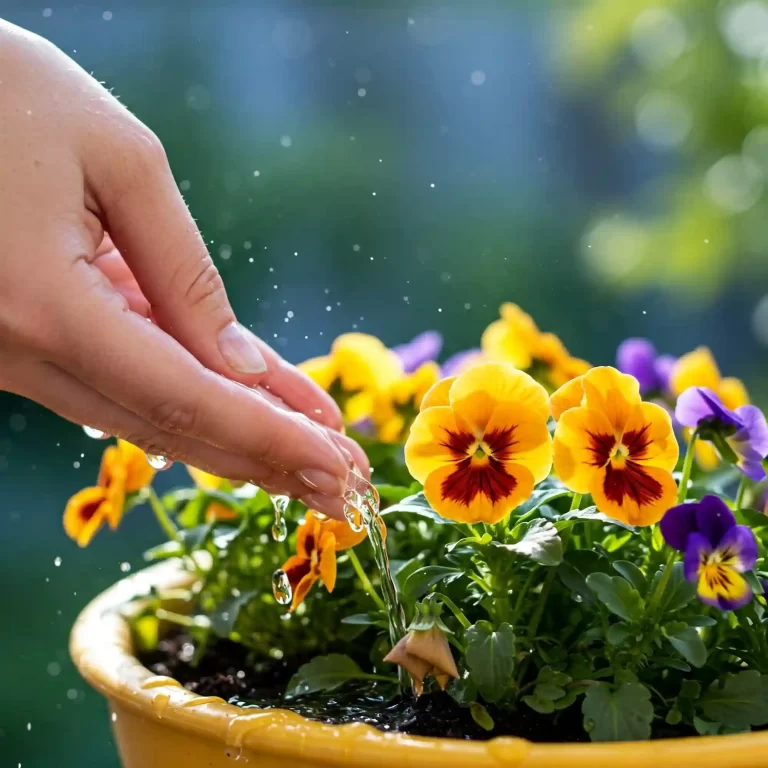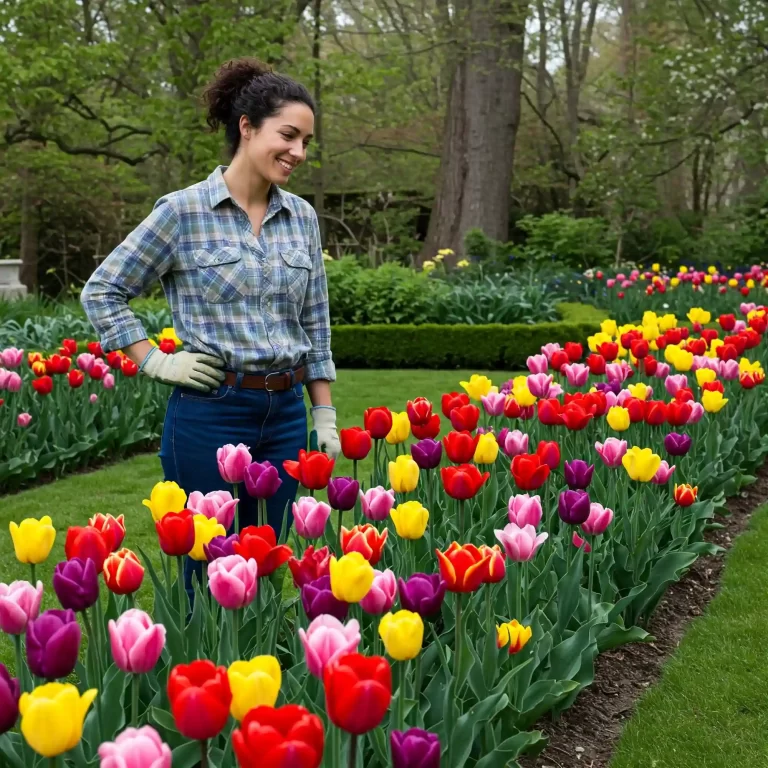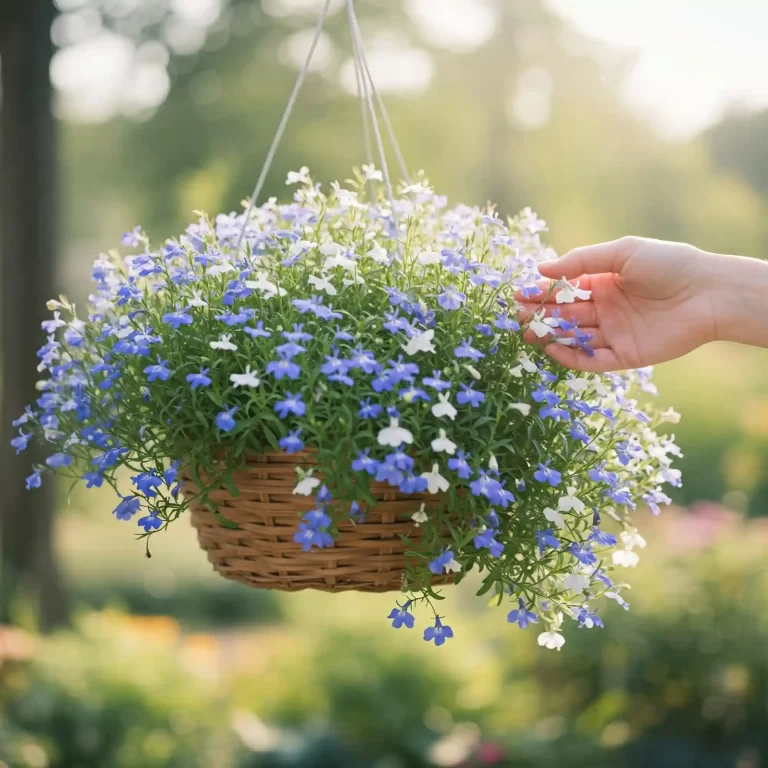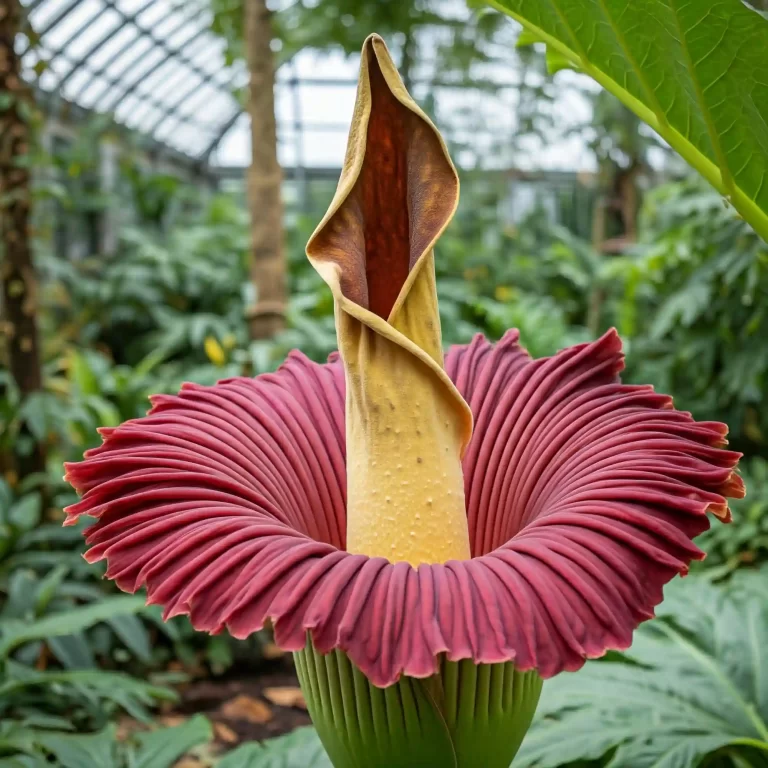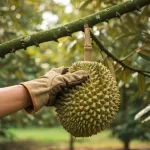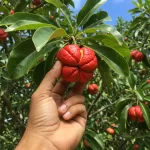Are you captivated by the ethereal beauty of Pinkmusk flowers, but unsure how to cultivate these delicate blooms in your garden? Fear not! This comprehensive guide will equip you with the essential knowledge to nurture Pinkmusk flowers from seed to splendor. We’ll delve into optimal growing conditions, planting techniques, care requirements, and troubleshooting common challenges. By following these expert tips, you’ll be well on your way to creating a breathtaking Pinkmusk flower display.
Choose the Perfect Planting Spot for Your Pinkmusk Flowers
The foundation for thriving Pinkmusk flowers lies in selecting the ideal planting location. These enchanting blooms flourish in environments that mimic their natural habitat, providing ample sunlight, well-draining soil, and sufficient space to spread.
Sunlight: Pinkmusk flowers are sun-loving plants, thriving in locations that receive at least six hours of direct sunlight daily. While they can tolerate partial shade, optimal growth and flowering occur in sunny spots. Avoid planting Pinkmusk flowers in areas with dense shade, as this can hinder their development and reduce bloom production.
Soil: Well-drained soil is crucial for Pinkmusk flower health. These plants prefer slightly alkaline soil with a pH range of 6.5 to 7.5. Heavy clay soil can retain excessive moisture, leading to root rot, so incorporating organic matter like compost or well-rotted manure can improve drainage and soil structure.
Site Preparation: Before planting, prepare the chosen area by removing weeds, rocks, and debris. Loosen the soil to a depth of about 12 inches to facilitate root penetration. Consider adding a layer of compost to enrich the soil and provide essential nutrients for healthy growth.
Container Gardening: Pinkmusk flowers can also be successfully grown in containers. Choose a pot with adequate drainage holes and fill it with a high-quality potting mix. Ensure the container is large enough to accommodate the plant’s mature size, as overcrowding can hinder growth.
Container gardening offers flexibility and versatility for growing Pinkmusk flowers, especially for those with limited garden space or specific soil conditions. When choosing a container, ensure it’s sufficiently large to accommodate the plant’s mature size, which typically ranges from 2 to 3 feet tall and wide. A 12-inch diameter pot is generally suitable for a single Pinkmusk plant.
Fill the container with a high-quality potting mix that provides excellent drainage. You can purchase a pre-made potting mix specifically designed for flowers or create your own by combining peat moss, perlite, and compost. Avoid using heavy clay-based potting mixes, as they can retain too much moisture and lead to root rot.
Place the container in a location that receives ample sunlight. Pinkmusk flowers thrive in at least six hours of direct sunlight daily. If your only sunny spot is a balcony or patio, consider using a mobile plant stand to move the container as the sun’s position changes throughout the day.
Regular watering is essential for container-grown Pinkmusk flowers, as their root systems are confined to a limited space. Check the soil moisture regularly and water deeply when the top inch of soil feels dry. Avoid overwatering, as this can lead to root problems.
To provide additional nutrients, fertilize your container-grown Pinkmusk flowers with a balanced liquid fertilizer every four to six weeks during the growing season. Follow the fertilizer package instructions for the correct application rate.
Sowing Pinkmusk Flower Seeds
Propagating Pinkmusk flowers from seed is a rewarding experience that allows you to cultivate these lovely plants from scratch. Whether you prefer starting seeds indoors or directly sowing them into the garden, careful planning and preparation are key to successful germination.
Timing is crucial when sowing Pinkmusk flower seeds. For regions with cold winters, starting seeds indoors six to eight weeks before the last frost is recommended. This provides ample time for seedlings to establish before transplanting outdoors. Alternatively, direct sowing can be done in the spring once the soil has warmed up and the risk of frost has passed.
To start seeds indoors, fill seed trays or pots with a high-quality seed starting mix. Moisten the soil before sowing seeds to ensure optimal germination conditions. Sow seeds about ¼ inch deep, covering them lightly with soil. Gently firm the soil and mist the surface with water.
Place the seed trays in a warm, brightly lit location. Maintain consistent soil moisture by misting as needed, avoiding overwatering. Once seedlings emerge, provide adequate light to prevent leggy growth. Consider using grow lights if natural light is insufficient.
For direct sowing, prepare the garden bed by removing weeds and loosening the soil. Sow seeds according to the seed packet instructions, spacing them appropriately. Cover the seeds with a thin layer of soil and gently firm the ground. Keep the soil moist until germination occurs.
Transplanting Pinkmusk Seedlings
Once your Pinkmusk seedlings have developed a few sets of true leaves, typically four to six weeks after sowing, they are ready for transplanting. This process introduces them to their permanent garden home or larger containers, allowing them to establish a robust root system and thrive.
Hardening Off: Before transplanting, it’s essential to acclimate seedlings to outdoor conditions through a process called hardening off. Gradually expose seedlings to outdoor environments for short periods, increasing the duration daily over a week. This helps them adjust to temperature fluctuations, wind, and sunlight.
Selecting a Planting Site: Choose a planting location that receives ample sunlight and offers well-drained soil. Space seedlings approximately 12 to 18 inches apart to allow for adequate growth. Prepare the soil by removing weeds and incorporating compost or aged manure to improve fertility.
Transplanting Process: Carefully remove seedlings from their seed trays or pots, taking care not to disturb the root ball. Gently loosen the roots if they are circling the container. Dig planting holes slightly larger than the root ball. Place the seedlings in the holes, ensuring they are planted at the same depth as they were in their containers. Backfill with soil, firmly pressing around the base of the plants. Water thoroughly after transplanting.
Providing Optimal Care for Your Pinkmusk Flowers
Consistent and appropriate care is essential for cultivating healthy and vibrant Pinkmusk flowers. By understanding their specific needs, you can nurture these plants to their full potential and enjoy their captivating blooms throughout the growing season.
Watering: Pinkmusk flowers prefer moist but not soggy soil. Water deeply and infrequently, allowing the soil to dry slightly between waterings. Avoid overhead watering, as wet foliage can increase the risk of fungal diseases. During hot, dry weather, increase the frequency of watering to prevent wilting.
Fertilizing: While Pinkmusk flowers are not heavy feeders, providing them with a balanced fertilizer can enhance their growth and flowering. Apply a diluted liquid fertilizer every four to six weeks during the growing season. Avoid over-fertilization, as it can lead to excessive foliage growth at the expense of blooms.
Mulching: Applying a layer of organic mulch around the base of Pinkmusk plants offers several benefits. Mulch helps retain soil moisture, suppresses weed growth, and regulates soil temperature. It also decomposes over time, enriching the soil with organic matter. Use materials like compost, shredded bark, or wood chips as mulch.
Staking: Taller Pinkmusk varieties may require staking to prevent them from toppling over in windy conditions or under the weight of heavy blooms. Insert garden stakes near the base of the plants and gently tie the stems to the stakes using plant ties or soft twine. Avoid binding the stems too tightly, as this can damage the plant.
Pruning Your Pinkmusk Flowers
Regular pruning is essential for maintaining the health and appearance of your Pinkmusk flowers. By removing spent blooms and shaping the plant, you can encourage bushier growth and prolonged flowering.
Deadheading: Deadheading involves removing faded flowers to prevent the plant from expending energy on seed production. This practice stimulates the production of new flower buds, resulting in a continuous display of blooms throughout the growing season. Regularly pinch off spent flowers to promote ongoing flowering.
Pruning for Shape: To encourage bushier growth, pinch back the tips of young shoots. This technique promotes branching and creates a fuller, more compact plant. Pruning can also be used to remove weak or leggy stems, improving the overall appearance of the Pinkmusk flower.
Timing: The best time to prune Pinkmusk flowers is in the spring before new growth begins. This allows the plant to focus its energy on producing new shoots and flowers. Light pruning can also be performed throughout the growing season to maintain shape and remove spent blooms.
Note: Avoid heavy pruning, as this can reduce flowering.
Protecting Your Pinkmusk Flowers from Pests and Diseases
While Pinkmusk flowers are generally resilient, they can be susceptible to certain pests and diseases. Implementing preventive measures and addressing problems promptly can help protect your plants and maintain their health.
Common Pests:
- Aphids: These tiny sap-sucking insects can infest Pinkmusk flowers, causing distorted growth and yellowing leaves. Strong water sprays can dislodge aphids, or you can use insecticidal soap or neem oil as natural control methods.
- Slugs and Snails: These pests can devour young seedlings and leaves. Create barriers around your plants using diatomaceous earth or copper tape to deter them. Handpicking slugs and snails at night can also be effective.
- Spider Mites: These microscopic pests infest the undersides of leaves, causing yellowing and stippling. Regular monitoring and hosing down plants with water can help prevent infestations. Insecticidal soap or neem oil can also be used for control.
Common Diseases:
- Powdery Mildew: This fungal disease appears as a white powdery coating on leaves. Proper spacing between plants, ensuring good air circulation, and avoiding overhead watering can help prevent powdery mildew. If an infestation occurs, use a fungicide specifically designed for powdery mildew.
- Rust: This fungal disease causes orange or brown spots on leaves and stems. Remove and destroy infected plant parts to prevent the spread of rust. Good air circulation and avoiding overhead watering can also help reduce the risk of infection.
Prevention Tips:
- Healthy Plants: Strong, healthy Pinkmusk flowers are better equipped to resist pests and diseases. Provide adequate sunlight, water, and nutrients to promote plant vigor.
- Good Garden Hygiene: Remove plant debris and weeds from around your Pinkmusk flowers to reduce the risk of pests and diseases.
- Crop Rotation: Rotate Pinkmusk flowers to different planting locations each year to disrupt the life cycle of soil-borne pathogens.
- Resistant Varieties: Consider planting Pinkmusk flower varieties known for their resistance to common pests and diseases.
By implementing these preventive measures and addressing problems promptly, you can protect your Pinkmusk flowers and enjoy their beauty for years to come.
Harvesting Pinkmusk Flowers
Pinkmusk flowers are not only visually appealing but also versatile in their uses. Harvesting these blossoms at the right time can ensure their longevity and beauty for various purposes.
Timing:
- Bouquets: For fresh-cut arrangements, harvest Pinkmusk flowers in the early morning when they are fully open and hydrated.
- Drying: If you plan to dry Pinkmusk flowers, choose blooms that are fully open but not yet wilting.
Harvesting Techniques:
- Cutting: Use sharp, clean pruning shears to cut the flower stems at an angle. Leave several leaves on the stem to encourage continued growth.
- Conditioning: Place the cut stems in a bucket of lukewarm water containing a flower preservative. This helps extend the vase life of your Pinkmusk flowers.
Drying Pinkmusk Flowers:
- Air Drying: Create small bunches of Pinkmusk flowers and tie them together with twine. Hang them upside down in a warm, dry, and dark location with good air circulation. Allow the flowers to dry completely before storing them in airtight containers.
- Silica Gel Drying: Place individual Pinkmusk flowers in a container filled with silica gel. Cover the container and allow the flowers to dry completely. This method preserves the flower’s color and shape better than air drying.
Using Pinkmusk Flowers:
- Fresh Cut Flowers: Pinkmusk flowers add a touch of elegance to bouquets and arrangements. Combine them with other complementary flowers for a stunning display.
- Dried Flowers: Dried Pinkmusk flowers can be used in various decorative projects, such as wreaths, potpourris, or floral arrangements.
- Culinary Purposes: While not commonly used in cooking, Pinkmusk flowers are edible and can be added to salads or used as garnishes for desserts. However, ensure the flowers are free from pesticides before consumption.
Propagating Pinkmusk Flowers
Pinkmusk flowers can be propagated through various methods, allowing you to expand your garden or share these lovely plants with others. Two common methods include seed propagation and cuttings.
Seed Propagation:
While Pinkmusk flowers readily self-seed, you can also collect seeds from your existing plants for controlled propagation. Allow seed pods to mature on the plant until they turn brown and dry. Carefully collect the seeds and store them in a cool, dry place until ready to sow. Follow the seed sowing guidelines mentioned earlier in this guide for successful germination.
Cuttings:
Taking cuttings is another effective method for propagating Pinkmusk flowers. Select healthy, non-flowering shoots with several nodes. Cuttings should be approximately 4-6 inches long. Remove leaves from the lower half of the cutting and dip the cut end in rooting hormone for faster root development.
Plant the cuttings in a pot filled with a well-draining potting mix. Cover the pot with a plastic bag or clear plastic wrap to create a humid environment. Place the pot in a warm, bright location, avoiding direct sunlight. Regularly mist the cuttings to maintain humidity. Roots should develop within several weeks. Once the cuttings have established roots, they can be transplanted into individual pots or the garden.
By mastering these propagation techniques, you can enjoy the beauty of Pinkmusk flowers year after year and share them with fellow gardening enthusiasts.
Note: Pinkmusk flowers are self-seeding plants, so they may naturally spread and establish themselves in your garden.
Overwintering Pinkmusk Flowers
Pinkmusk flowers are typically classified as hardy perennials, meaning they can withstand cold winter temperatures in many regions. However, the extent of winter care depends on your specific climate.
In Mild Climates:
- Pinkmusk flowers can often survive winter without additional protection.
- Cut back dead foliage to prevent disease and pests.
- Mulching the base of the plants with a layer of organic material can help insulate roots from extreme temperature fluctuations.
In Cold Climates:
- Heavy frost or prolonged freezing temperatures can damage Pinkmusk flowers.
- Consider covering plants with a layer of burlap or frost cloth during severe weather.
- For container-grown Pinkmusk flowers, move them to a protected location, such as a garage or unheated shed, to shield them from freezing temperatures.
- Bring container-grown plants indoors if space permits. Place them in a cool, bright location away from drafts.
Spring Care:
- In early spring, remove any dead or damaged foliage.
- Lightly prune to encourage new growth.
- Apply a balanced fertilizer to support plant recovery.
By providing appropriate winter protection, you can ensure the survival of your Pinkmusk flowers and enjoy their beauty for many years to come.
Enjoying the Beauty of Your Pinkmusk Flowers
Pinkmusk flowers are a delightful addition to any garden, offering a combination of beauty, fragrance, and versatility. By understanding their growth habits and care requirements, you can create stunning displays that enhance your outdoor space.
Garden Design:
- Pinkmusk flowers excel as border plants, creating a soft and romantic effect along garden paths or walkways.
- Incorporate them into cottage gardens or wildflower meadows for a natural and enchanting look.
- Use them as ground cover in areas with dappled shade.
- Combine Pinkmusk flowers with other plants that complement their color and texture, such as roses, lavender, or delphiniums.
Cut Flowers:
- Harvest Pinkmusk flowers in the morning when they are fully open for long-lasting arrangements.
- Combine Pinkmusk flowers with other blooms to create beautiful bouquets.
- Experiment with different vase shapes and styles to showcase the delicate beauty of these flowers.
Drying Flowers:
- Preserve the beauty of Pinkmusk flowers by drying them for year-round enjoyment.
- Create dried flower arrangements, wreaths, or potpourris.
- Use dried Pinkmusk flowers to add a touch of natural elegance to your home decor.
Attracting Wildlife:
- Pinkmusk flowers are a magnet for pollinators, such as bees, butterflies, and hummingbirds.
- Create a haven for wildlife by planting Pinkmusk flowers in your garden.
By appreciating the multifaceted beauty of Pinkmusk flowers and incorporating them into your garden design, you can create a truly enchanting and inspiring outdoor space.
Conclusion
Cultivating Pinkmusk flowers is a rewarding endeavor that brings forth a tapestry of delicate beauty and fragrance. By following the expert guidance outlined in this comprehensive guide, you can successfully grow these enchanting blooms in your garden. Remember to choose the ideal planting location, master seed sowing and transplanting techniques, provide consistent care, and protect your plants from pests and diseases. With patience and dedication, you’ll be rewarded with a breathtaking display of Pinkmusk flowers that will transform your outdoor space into a haven of natural elegance.
Additional Tips:
- Experiment with different Pinkmusk flower varieties to discover your favorites.
- Join gardening communities or forums to share your experiences and learn from others.
- Keep detailed records of your Pinkmusk flower cultivation journey to track your progress and refine your techniques.
- Embrace the joy of gardening and the satisfaction of nurturing these exquisite blooms.
